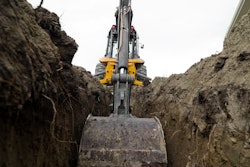
And while a one percent improvement in fuel economy may not get those of you in the heavy construction business too excited, another piece of news from last week only reinforced the importance of what Shell’s experts were telling us.
The EPA has released their draft fuel economy rules for medium and heavy duty diesel trucks, and as you might expect, the agency is hoping to wring every last drop of diesel out of everything bigger than a one-ton truck.
RELATED >> New heavy-duty diesel oil standard: What you need to know
Suddenly that one percent looms large.
The EPA cites greenhouse gas emissions as its reason for further improving fuel efficiency. The gas in question is carbon dioxide and the only way to reduce carbon dioxide is to burn less fuel. Burn a gallon of diesel and you put about 22 pounds of carbon dioxide into the atmosphere.
Reducing this means either better fuel economy or less work. So we can only hope that the equipment designers, the oil companies and everybody else in the industrial world figures out more and better ways to improve fuel economy. Otherwise, less work means fewer profits, jobs, and a lower GDP.
RELATED >> EPA, DOT propose heightened heavy duty diesel emissions, fuel efficiency standards for 2018
Dan Arcy, Shell’s global OEM technical manager and industry trade association liaison notes that a one percent improvement in fuel economy for on-highway trucks would reduce carbon dioxide emitted by diesel trucks by 4,000 tons annually. That’s the same as removing 23,000 trucks from the road. And current testing of the low viscosity oils would seem to indicate that a one percent improvement in fuel economy is conservative.
This April at Intermat, the big French equipment show held every third year in Paris, the engine manufacturers all said they were ready for Stage V (Europe) and Tier 5 in the United States. Tier 5 is going to be an easy fix, just put a diesel particulate filter on the machines that don’t already have them.
But Tier 5 is easy only because for the last 20 years Tiers 1 through 4 imposed a series of hugely expensive, gut wrenching changes on the engine manufacturers. The changes basically doubled the cost of a diesel engine, but today’s diesel engines put 95 percent less exhaust emissions than they did 20 years ago.
But can we get that kind of miracle in fuel efficiency?
It remains to be seen, but I suspect that the EPA is going to ask for it.











